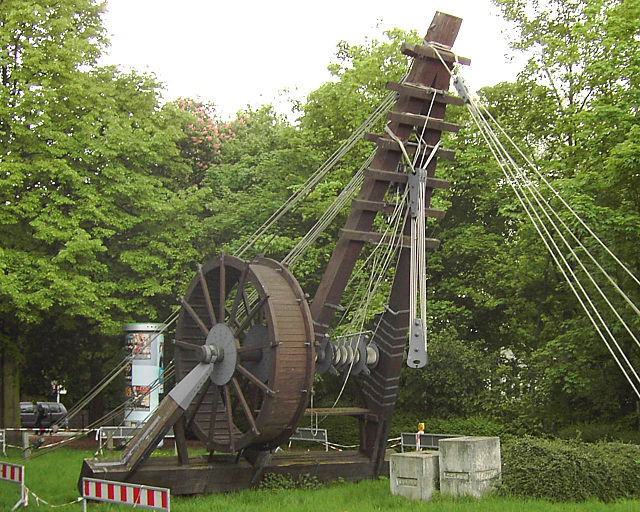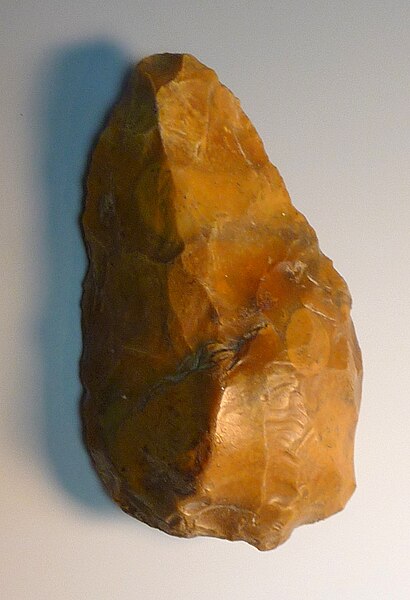A crane is a machine used to move materials both vertically and horizontally, utilizing a system of a boom, hoist, wire ropes or chains, and sheaves for lifting and relocating heavy objects within the swing of its boom. The device uses one or more simple machines, such as the lever and pulley, to create mechanical advantage to do its work. Cranes are commonly employed in transportation for the loading and unloading of freight, in construction for the movement of materials, and in manufacturing for the assembling of heavy equipment.
Manual crane from the late 19th century used for unloading small loads from ships at the Port of Barcelona, Spain
Reconstruction of a 10.4 m high Roman Polyspastos powered by a treadwheel at Bonn, Germany
Medieval (15th century) port crane for mounting masts and lifting cargo in Gdańsk
Double treadwheel crane in Pieter Bruegel's The Tower of Babel
A machine is a physical system that uses power to apply forces and control movement to perform an action. The term is commonly applied to artificial devices, such as those employing engines or motors, but also to natural biological macromolecules, such as molecular machines. Machines can be driven by animals and people, by natural forces such as wind and water, and by chemical, thermal, or electrical power, and include a system of mechanisms that shape the actuator input to achieve a specific application of output forces and movement. They can also include computers and sensors that monitor performance and plan movement, often called mechanical systems.
A Honda F1 racecar engine
A flint hand axe was found in Winchester.
The Kinematics of Machinery (1876) has an illustration of a four-bar linkage.
Diesel engine, friction clutch and gear transmission of an automobile








